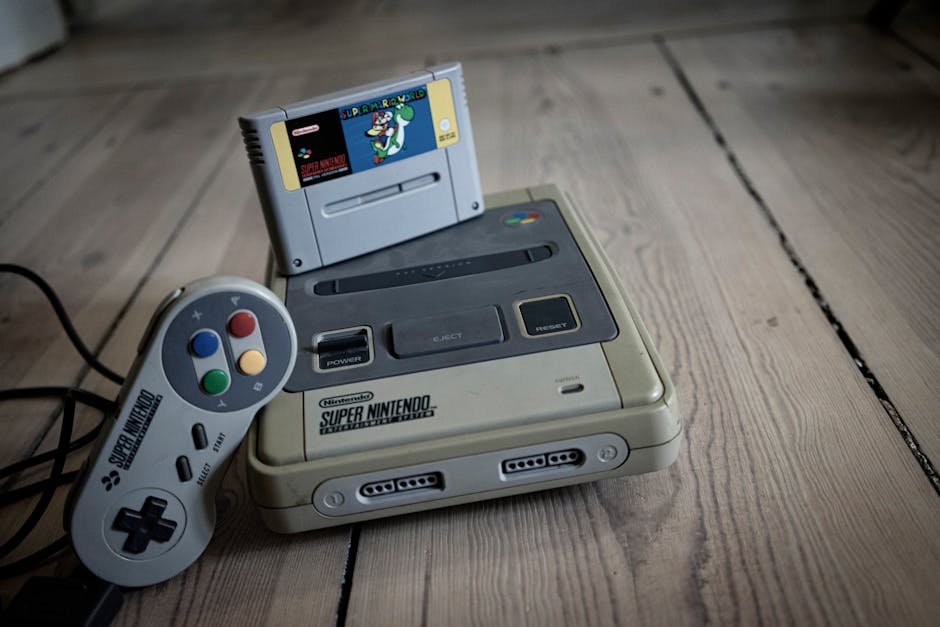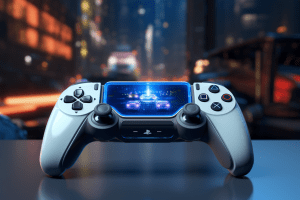Video games have become an integral part of our daily lives, providing an escape into a world of fantasy, action, and adventure. They’re not only a source of entertainment but also an essential tool for socializing and connecting people globally. But have you ever wondered how the very games you love to indulge in, reach the palm of your hand or get loaded on your console? How exactly are they manufactured and brought to life?
This fascinating journey from idea to reality involves numerous stages including game design, development, testing, production, and distribution. In this article, we will unwrap the process of video game manufacturing step-by-step, giving you an insightful look into the industry that has captured hearts and minds across generations. Let’s dive in and learn about the creation of virtual experiences that exhilarate and entertain us.
Understanding the Video Game Industry

The video game industry has become a global phenomenon, providing entertainment to millions of people worldwide. To understand how video games are manufactured, we must take a closer look at the extensive process behind the creation of these digital masterpieces.
First and foremost, video game creation begins with conceptualization. Talented developers brainstorm ideas, sculpt stories, and design characters that can captivate audiences and create lasting memories. Once a solid concept is in place, the production process begins.
During production, programmers expertly turn the developers’ vision into a functioning game by coding algorithms and scripts. Meanwhile, talented artists bring the game to life through visually stunning graphics and animations. Quality assurance teams also play a crucial role by rigorously testing gameplay and ensuring that any bugs or glitches are identified and addressed.
Finally, upon completion of production and quality assurance, video games are packaged and distributed through physical or digital stores, reaching the eager hands of gamers worldwide.
The Game Concept and Design Process

The game concept and design process is an integral part of the manufacturing of video games, where the initial idea is transformed into a cohesive and engaging gaming experience. This process typically starts with brainstorming, where creative teams collaborate to develop a core concept based on their interests, market trends, and player demands. Ideas are then fleshed out into detailed game design documents, which serve as a blueprint for the entire development process.
Once the design documents are finalized, the next step is to create a prototype to test gameplay mechanics, visuals, and audio aspects. This stage is crucial for identifying any flaws and iterating on the design until it meets the vision outlined in the design documents. With a solid foundation in place, the game’s assets – including characters, environments, and objects – are created by artists, designers, and animators, while programmers develop the code that brings the game to life. Throughout this process, consistent collaboration among team members is vital to ensure the final product aligns with the initial vision and provides an enjoyable gaming experience for players.
Game Development Team and Roles

The game development process relies heavily on the commitment and expertise of talented professionals forming the game development team. Each member brings their skills and passion to the table, ensuring the end result is a high-quality, captivating video game that enthralls players across the globe.
One of the essential roles in a game development team is the game designer, who is responsible for building the overall concept and flow of the game. This role involves crafting storylines, designing gameplay mechanics, and ensuring the game is engaging and enjoyable.
Another vital team member is the programmer, who brings the game designer’s vision to life through meticulous coding. Programmers also solve technical issues and ensure a smooth gaming experience.
The artists and animators enhance the game’s visual appeal by creating realistic characters, immersive environments, and captivating special effects. They work together with sound designers to evoke emotions and elevate the gaming experience.
Effective collaboration between these key roles, along with others such as producers, level designers, and game testers, results in the creation of memorable and successful video games.
Game Engine and Tools

Game engines and tools play a critical role in the manufacturing process of video games. A game engine is essentially the backbone of a game, providing a framework to design, develop, and run high-quality, interactive gaming experiences. Some popular game engines include Unity, Unreal Engine, and Godot.
Developers utilize these engines to create not only the stunning visuals and immersive gameplay we all love but also ensure optimal performance for various platforms, including consoles, PCs, and mobile devices. Additional tools such as graphics editors, audio software, and programming languages further aid in crafting intricate virtual worlds and dynamic gameplay mechanics.
The combination of game engines and developer tools enables creators to push the boundaries of design and offer unique experiences that captivate audiences worldwide. In turn, this drives the demand for increasingly innovative and engaging gaming content which carves the way for newer technologies and creative expressions.
Game Assets Creation

Creating game assets is a crucial step in the manufacturing process of video games. These assets include characters, objects, environments, and everything visible in the game world.
The development starts with conceptual art, where artists sketch ideas and develop the visual style. After the concept is approved, the production of 3D models and textures begins. The artists create a digital mesh (a network of points, edges, and polygons) for each object, followed by mapping of textures and materials to give them a realistic appearance.
The creation of game assets also involves animators, who bring life to characters and objects by creating realistic movements and reactions. Rigging plays a vital role in this phase, as it serves as a digital skeleton that allows smooth animation.
Ultimately, these assets are optimized and integrated into the game engine, where the developers can use them according to the game design and mechanics. This efficient collaboration between artists, animators, and developers ensures a visually stunning and engaging gaming experience.
Game Programming and Coding

Game programming and coding form the backbone of video game manufacturing. It is through these processes that a game comes to life, with developers transforming ideas and concepts into interactive digital experiences. Game programmers are responsible for creating the code that enables games to run efficiently and effectively on various platforms.
Coding in game creation involves writing, maintaining, and debugging lines of code using a variety of computer programming languages, such as C++, Python, and Java. The process begins with game designers outlining the game mechanics and dynamics before handing them over to programmers who then implement these concepts into functional code.
Game programming also includes creating the artificial intelligence (AI) that governs non-player characters (NPCs) and the algorithms that control how in-game elements respond to player input. Moreover, developers need to ensure that their games perform well, which often requires focused optimization to minimize resource consumption and maintain smooth gameplay. Ultimately, game programming and coding breathes life into video games, allowing players to immerse themselves in unique and engaging virtual worlds.
Quality Assurance and Testing

Quality Assurance (QA) and testing are crucial steps in the development of video games to ensure a seamless and enjoyable experience for players. These processes aim to identify and rectify any bugs, glitches, or design issues that may hinder the game’s performance or functionality.
QA begins at the early stage of a game’s development, with testers working closely with programmers and designers to assess various aspects of the game. Frequent playtesting helps identify possible issues in the game mechanics, controls, and overall logic.
Once the game reaches a more advanced stage, QA teams conduct extensive testing to ensure the final product is polished and free from errors. They perform various tests, such as regression testing, compatibility testing, and performance testing, to ensure the game works smoothly on different devices and platforms.
In summary, Quality Assurance and testing play a vital role in the manufacturing of video games, as they help guarantee a smooth, enjoyable, and error-free gaming experience for players across the world.
Marketing and Distribution Channels

In today’s fast-paced world, marketing and distribution are crucial aspects of successfully releasing a new video game. Manufacturers employ multiple strategies to introduce their creations to the eager gaming community.
Social media platforms play an integral role in creating buzz and excitement around an upcoming game release. Developers and publishers leverage influencers and gaming content creators to showcase and review gameplay, igniting conversations and engagement online.
As the world continues to shift towards digital consumption, most popular video game platforms, such as PlayStation, Xbox, and Nintendo, have their own online stores. These digital distribution channels offer both convenience and instant accessibility to gamers.
Additionally, game manufacturers continue to partner with major brick-and-mortar retailers, ensuring the availability of physical copies for traditional enthusiasts. Collaborative merchandising strategies, including limited edition game bundles and exclusive bonus content, further help entice consumers and drive sales.









